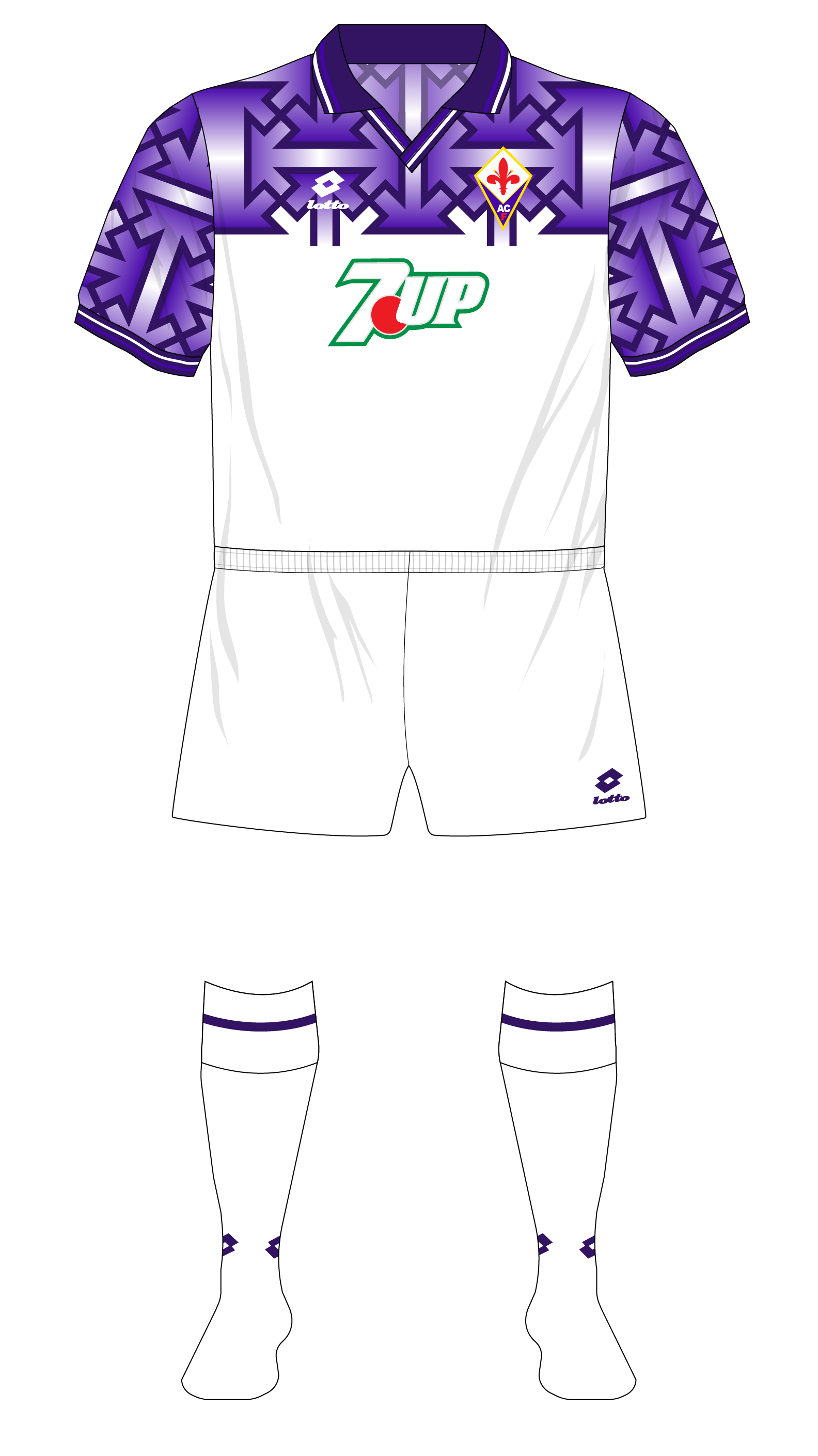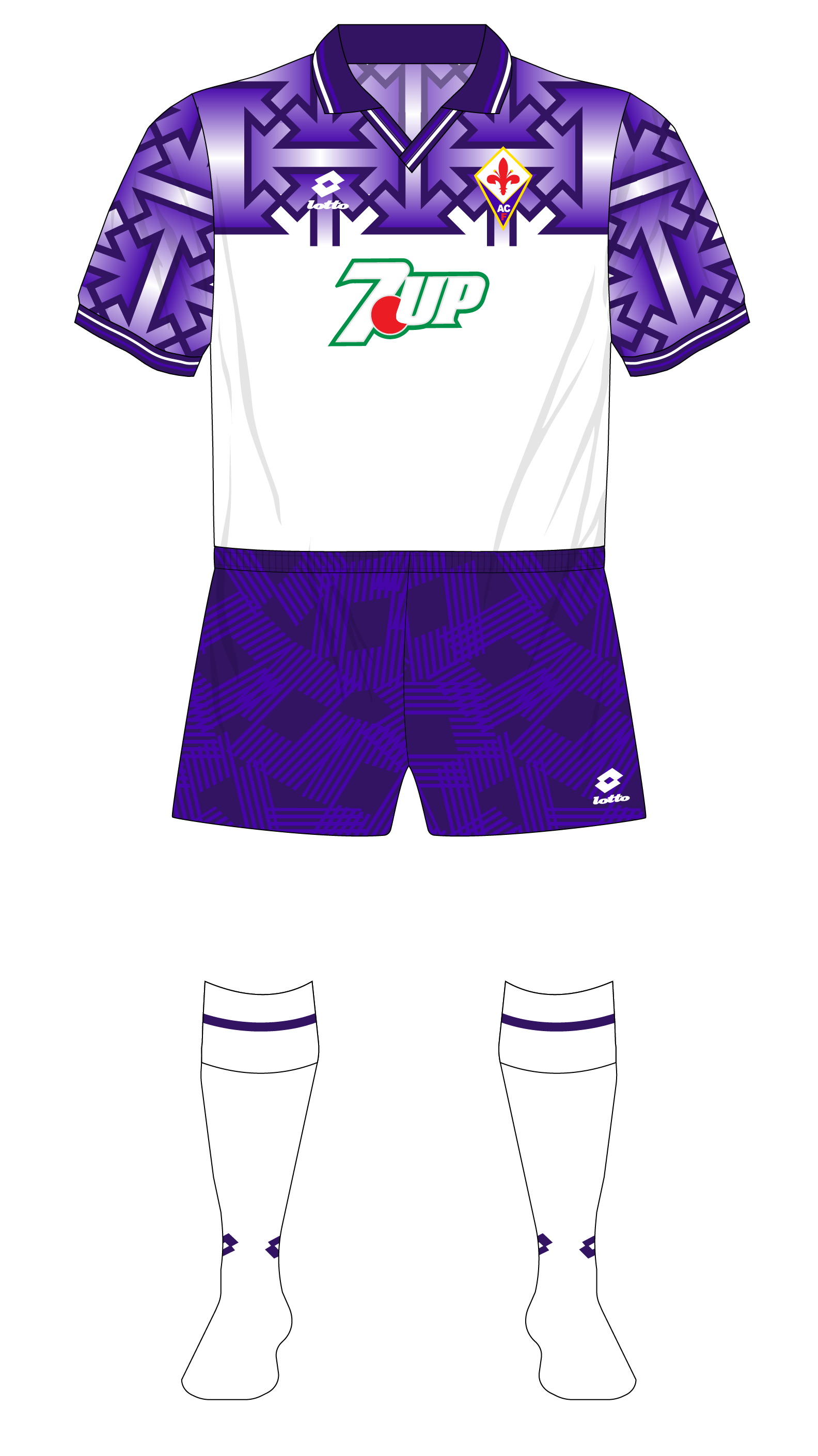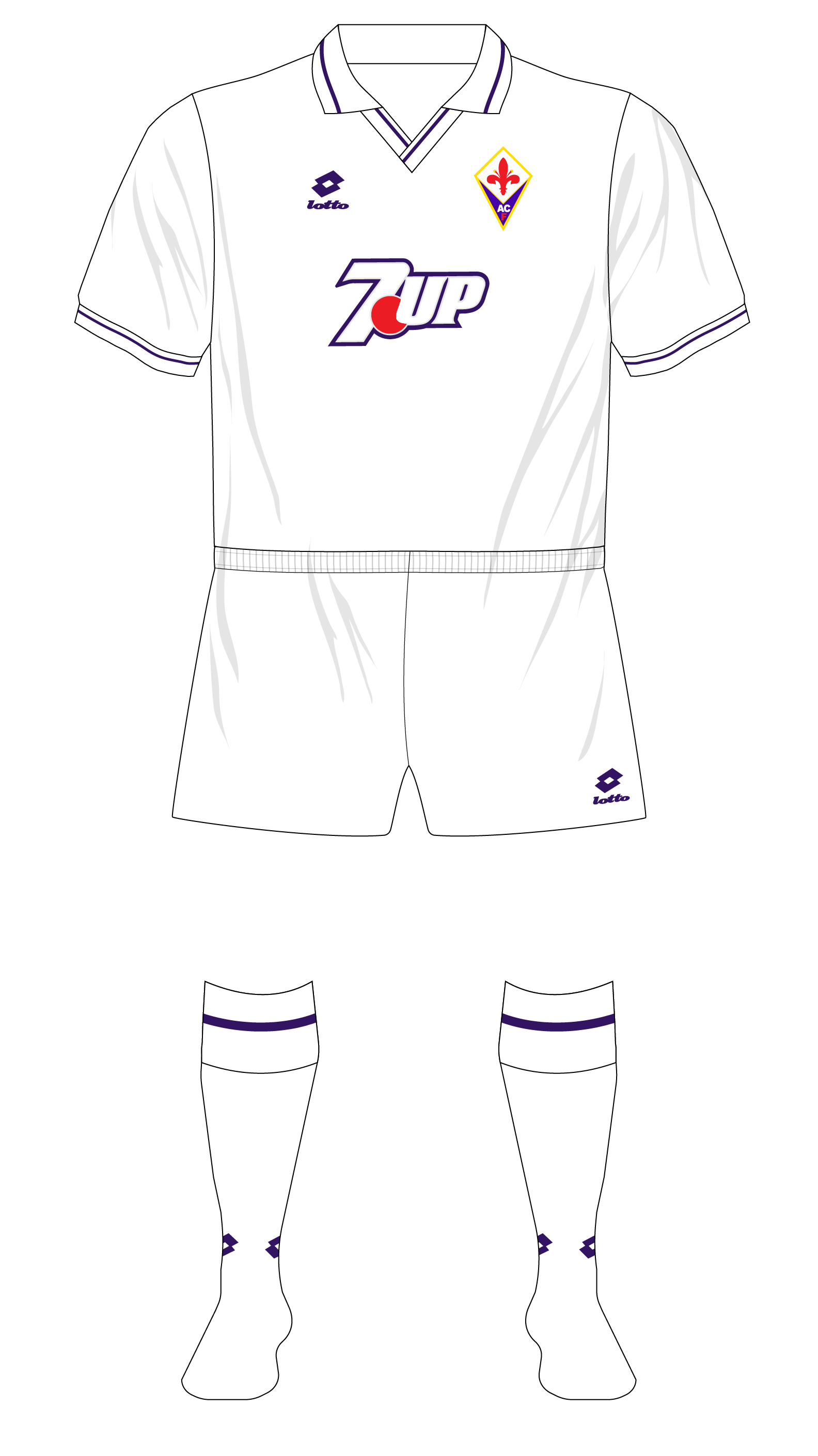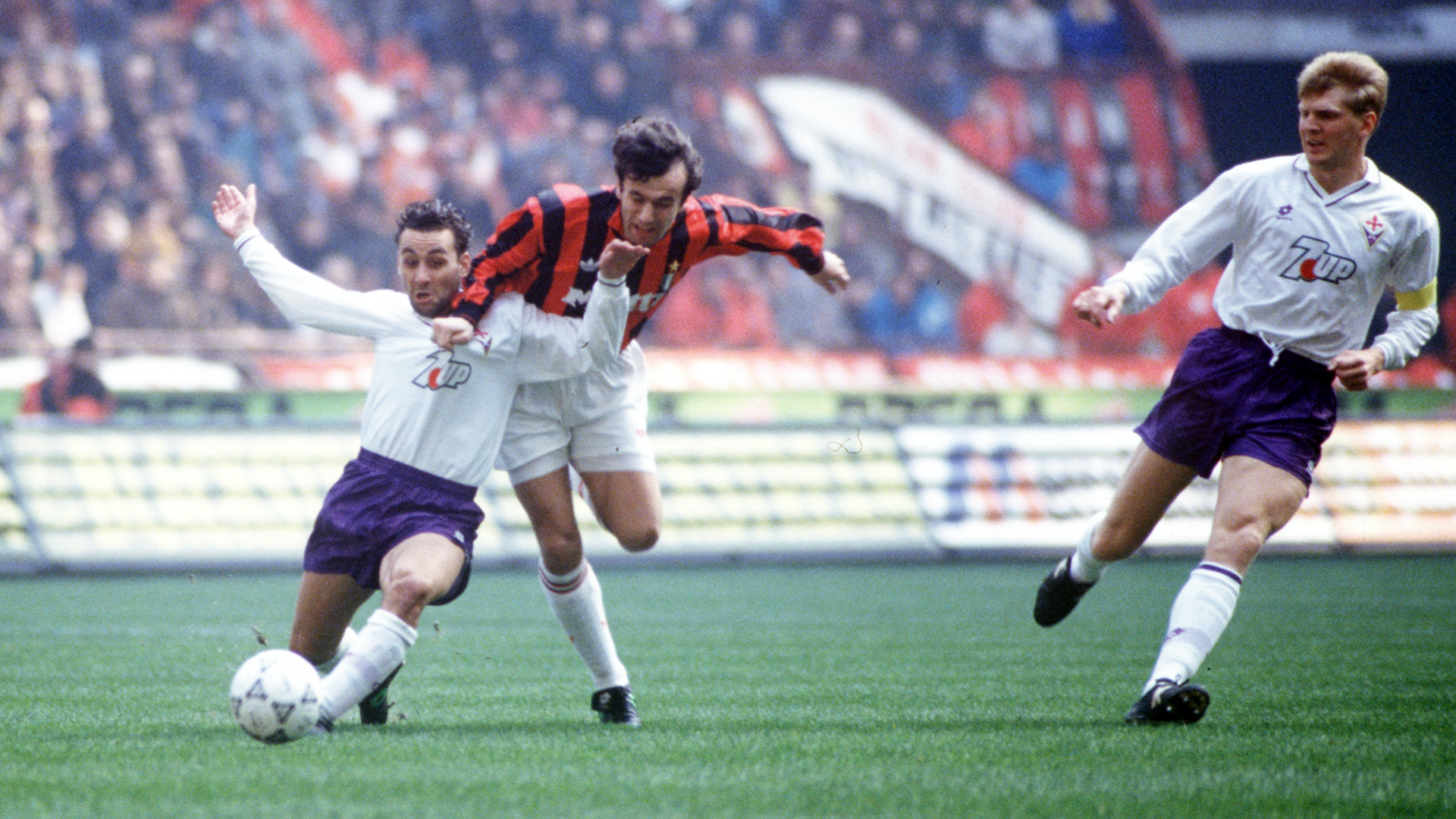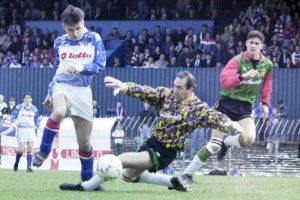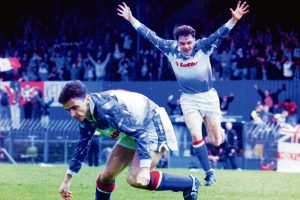The early 1990s signalled a bolder approach from kit designers and Italy was no exception.
While things had been largely stable up until the end of 1990-91, the following campaign saw manufacturers provide more adventurous offerings and that continued for 1992-93.
By and large, teams’ home kits were still considered sacrosanct and the flourishes were more subtle, but on change strips it was a case of anything going. Fiorentina, who had joined forces with Lotto, were no exception – while the purple first-choice kit was tasteful, the white back-up was laden down with accoutrements.
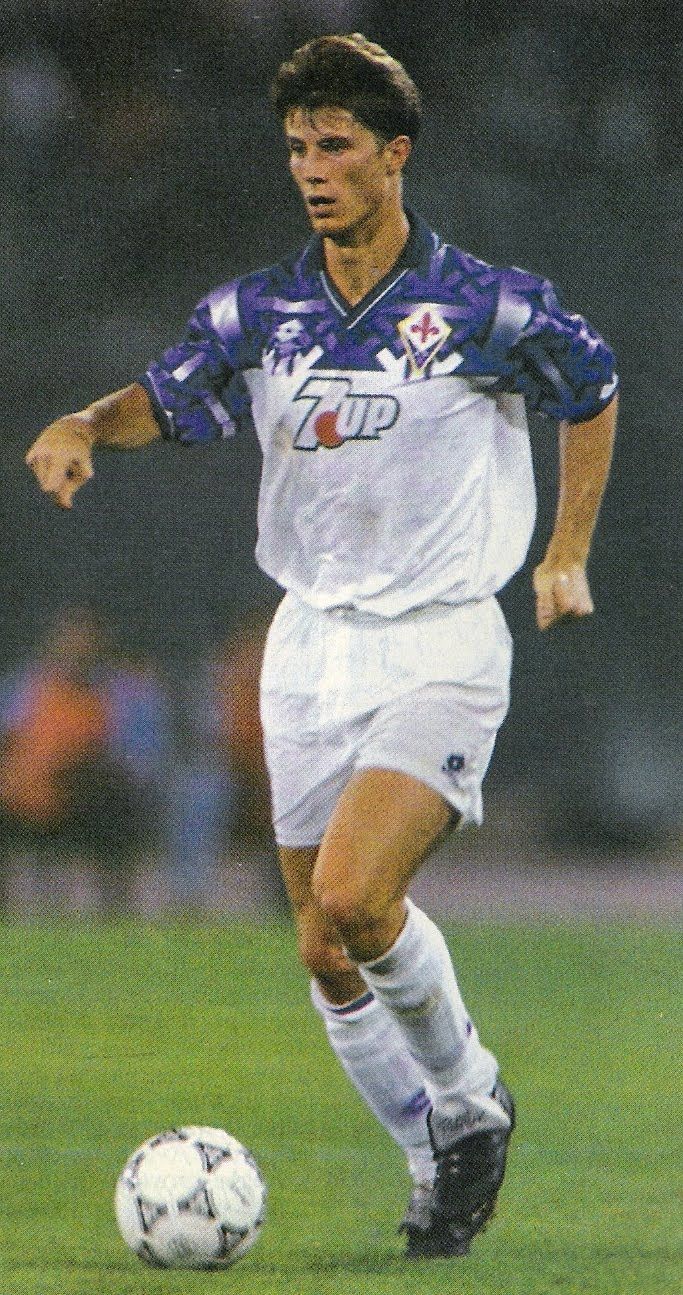
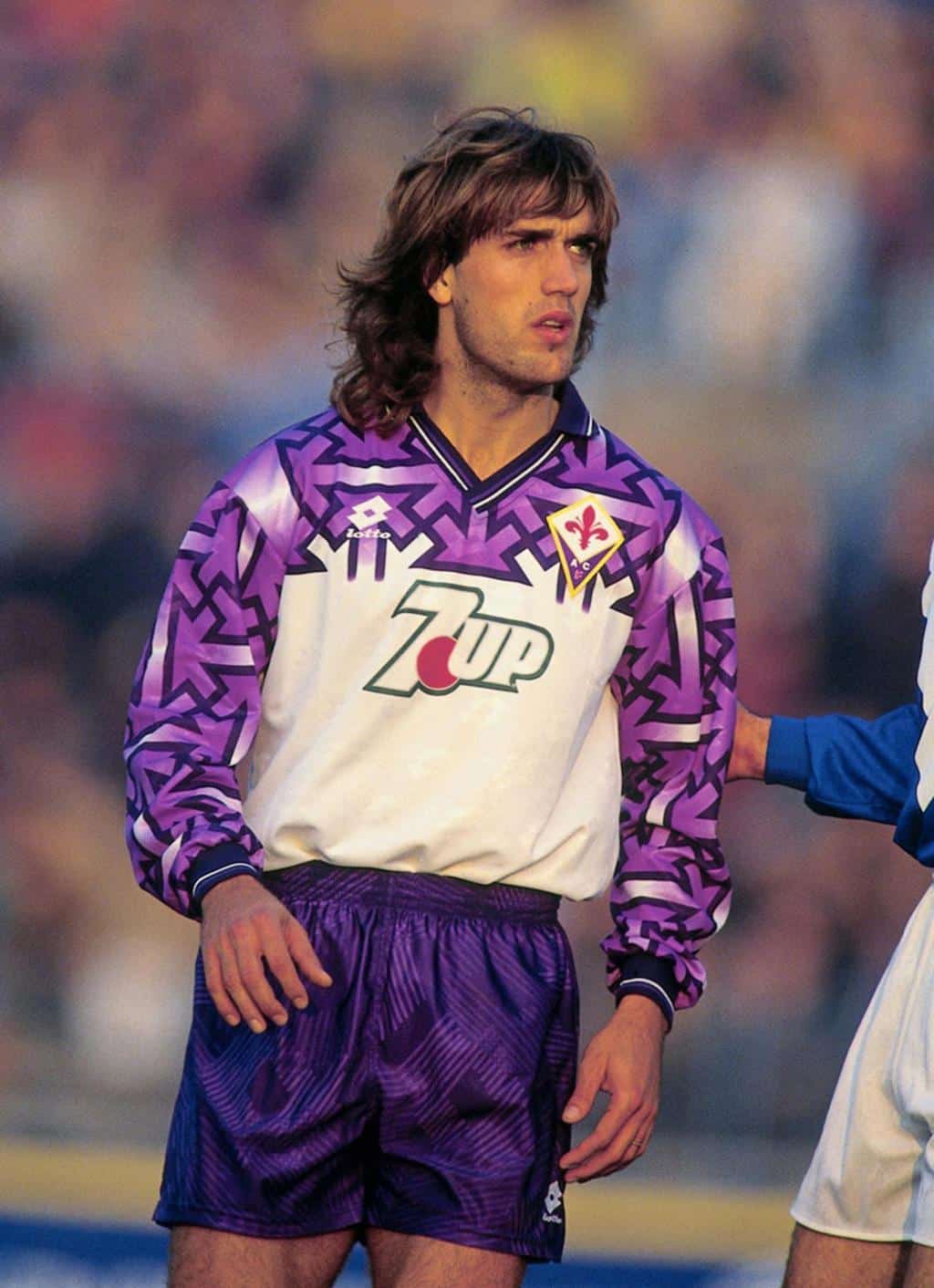
Worn with white or purple shorts and white socks, the upper body and sleeves were adorned with a repeating pattern in a dark purple as well as a gradient effect. However, before too long it was observed in some quarters that the pattern could be said to feature swastikas.
Given the fascist associations of Fiorentina’s founder Luigi Ridolfi, this generated controversy and so the club and Lotto were forced to act quickly. A press release made clear “that the optical effect (of a swastika image) is purely a matter of chance.”
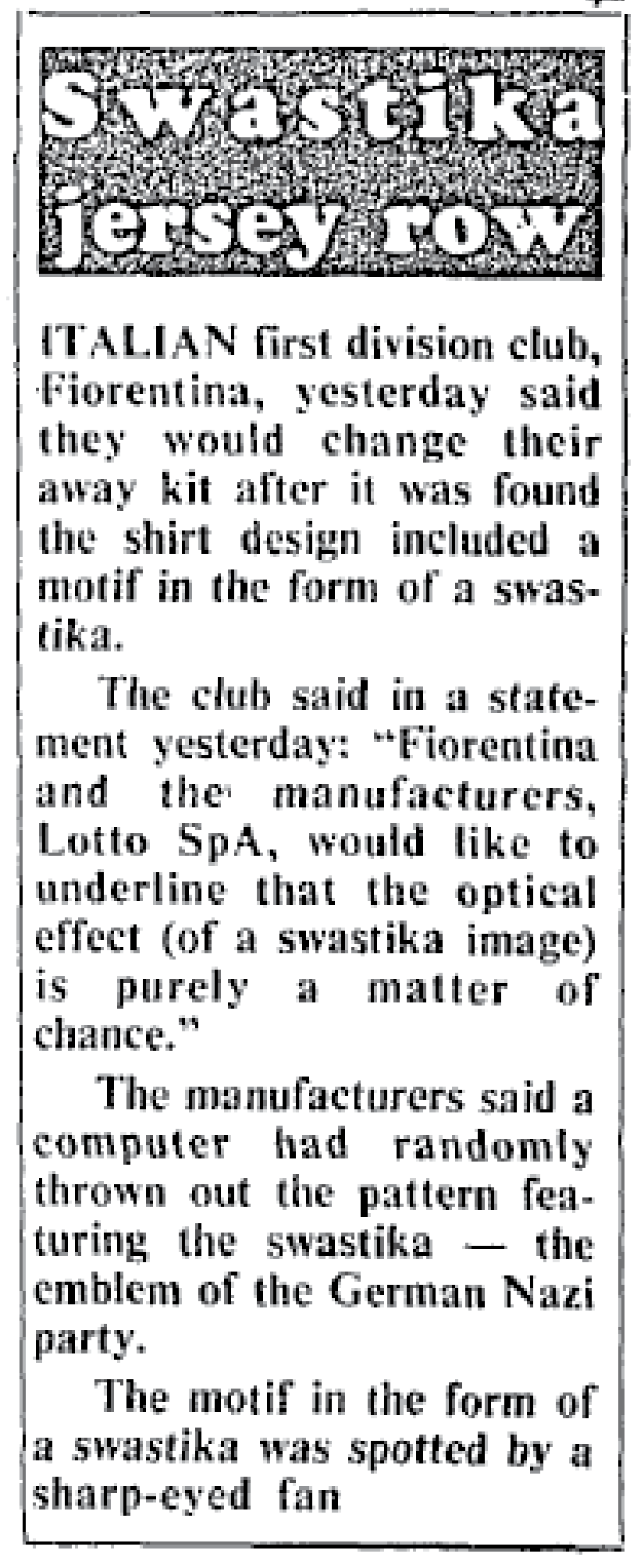
Nevertheless the decision was taken to hastily produce a plain white change shirt, to be worn for the remainder of the season. However, neither the shirt nor the goals of Gabriel Batistuta were able to arrest la viola’s slide in form and a record of eight wins, 14 draws and 12 defeats saw them relegated to Serie B.
THE SHIRTS:
Whether or not the episode affected the Fiorentina/Lotto relationship, we can’t say, but 1993-94 saw the club partner with Uhlsport, who provided a change shirt featuring an abstract pattern as the club made an immediate return to the top flight.
Also in 1993-94, Lotto provided a modified version of the ‘swastika shirt’ to Linfield, with well-placed incisions ensuring the pattern couldn’t cause offence.
This blog was written by Museum of Jerseys. Please visit their website to read more interesting articles!


